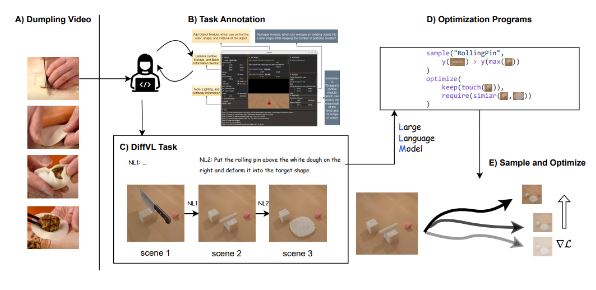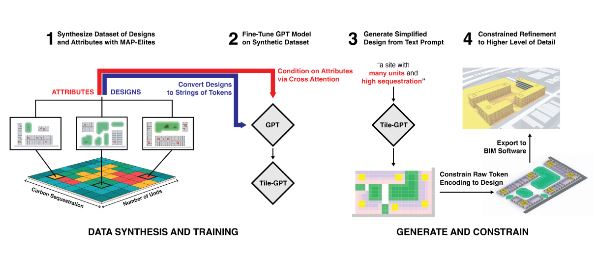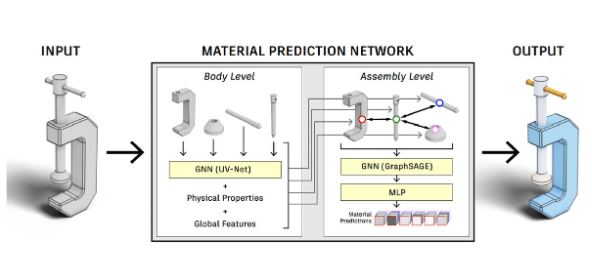Recently Published by Autodesk Researchers
Autodesk Research teams regularly contribute to peer-reviewed scientific journals and present at conferences around the world. Check out some recent publications from Autodesk Researchers.
DiffVL: Scaling up Soft Body Manipulation using Vision-Language Driven Differentiable Physics
Combining gradient-based trajectory optimization with differentiable physics simulation is an efficient technique for solving soft-body manipulation problems. Using a well-crafted optimization objective, the solver can quickly converge onto a valid trajectory. However, writing the appropriate objective functions requires expert knowledge, making it difficult to collect a large set of naturalistic problems from non-expert users. In this paper, the team introduces DiffVL, a method that enables non-expert users to communicate soft-body manipulation tasks a combination of vision and natural language, given in multiple stages – that can be readily leveraged by a differential physics solver.
Generative Design through Quality Diversity Data Synthesis and Language Models
Two fundamental challenges face generative models in engineering applications: the acquisition of high-performing, diverse datasets, and the adherence to precise constraints in generated designs. In this research, the team proposes a novel approach combining optimization, constraint satisfaction, and language models to tackle these challenges in architectural design. Their method uses Quality-Diversity (QD) to generate a diverse, high-performing dataset that they then fine-tune a language model to generate high-level designs. These designs are then refined into detailed, constraint-compliant layouts using the Wave Function Collapse algorithm.
To support intelligent computer-aided design (CAD), the team introduces a machine learning architecture, namely HG-CAD, that recommends assembly body material through joint learning of body and assembly-level features using a hierarchical graph representation. Specifically, the team formulates the material prediction and recommendation process as a node-level classification task over a novel hierarchical graph representation of CAD models, with a low-level graph capturing the body geometry, a high-level graph representing the assembly topology, and a batch-level mask randomization enabling contextual awareness. This enables the network to aggregate geometric and topological features from both the body and assembly levels, leading to competitive performance.
Get in touch
Have we piqued your interest? Get in touch if you’d like to learn more about Autodesk Research, our projects, people, and potential collaboration opportunities
Contact us

